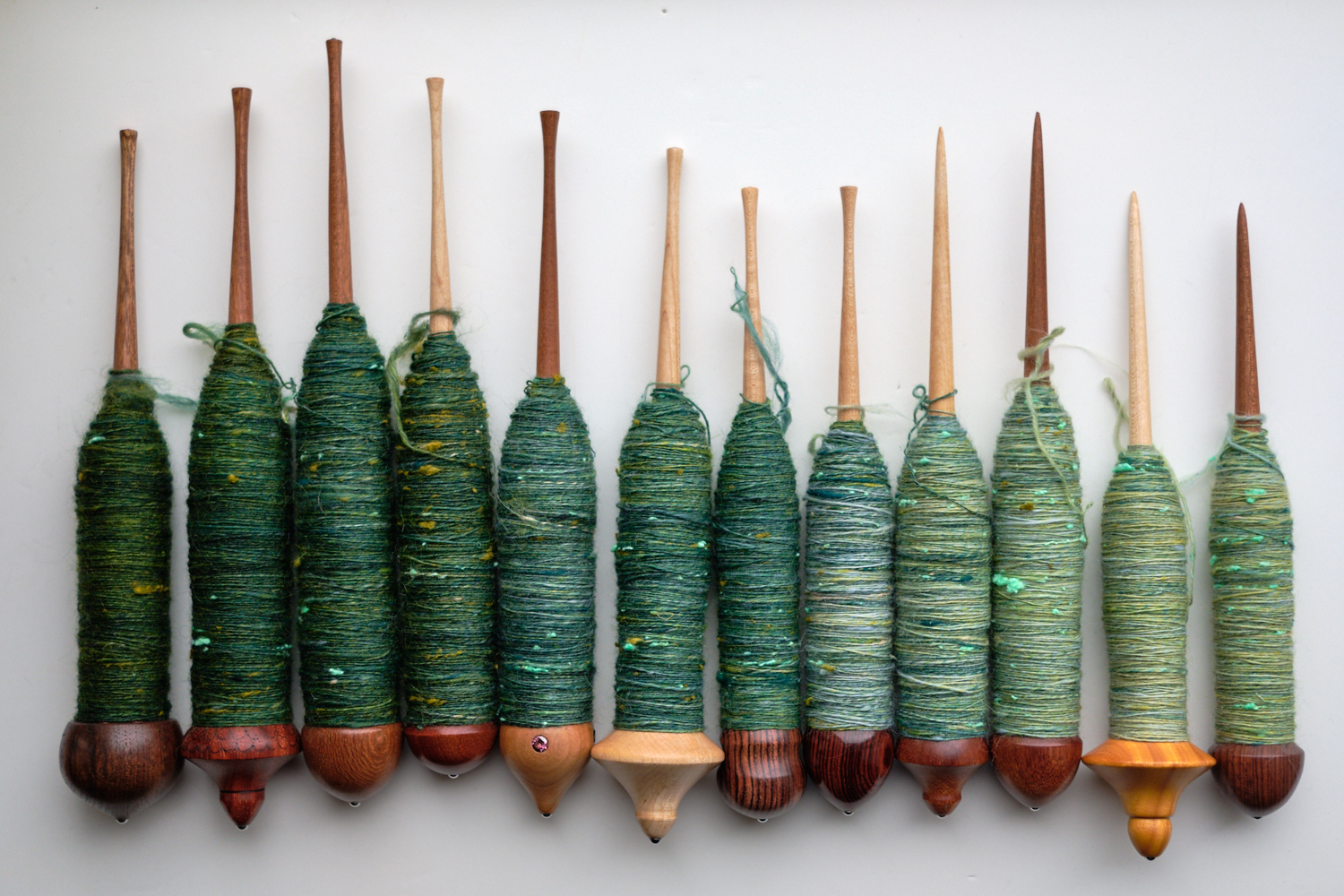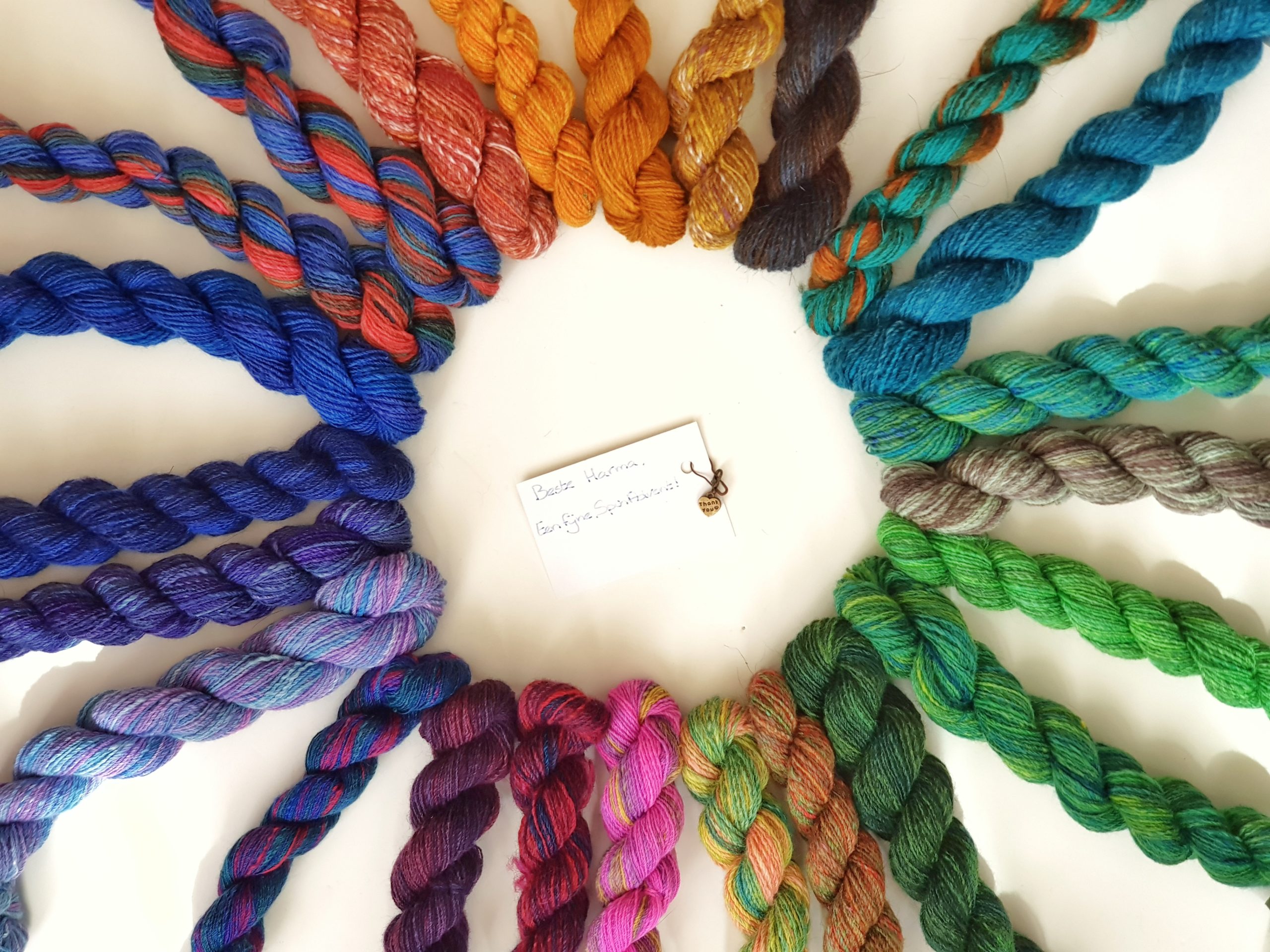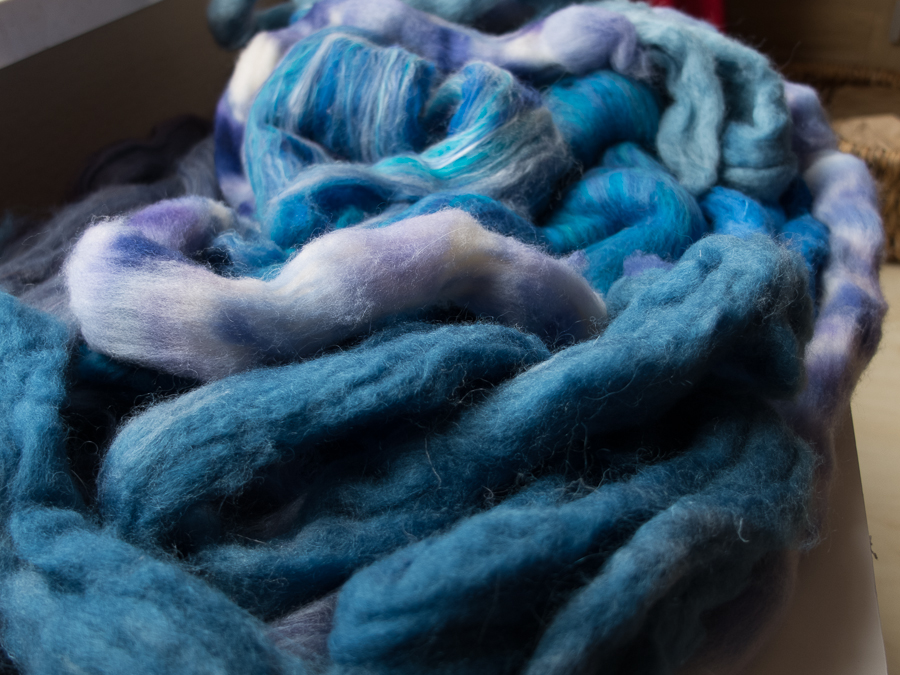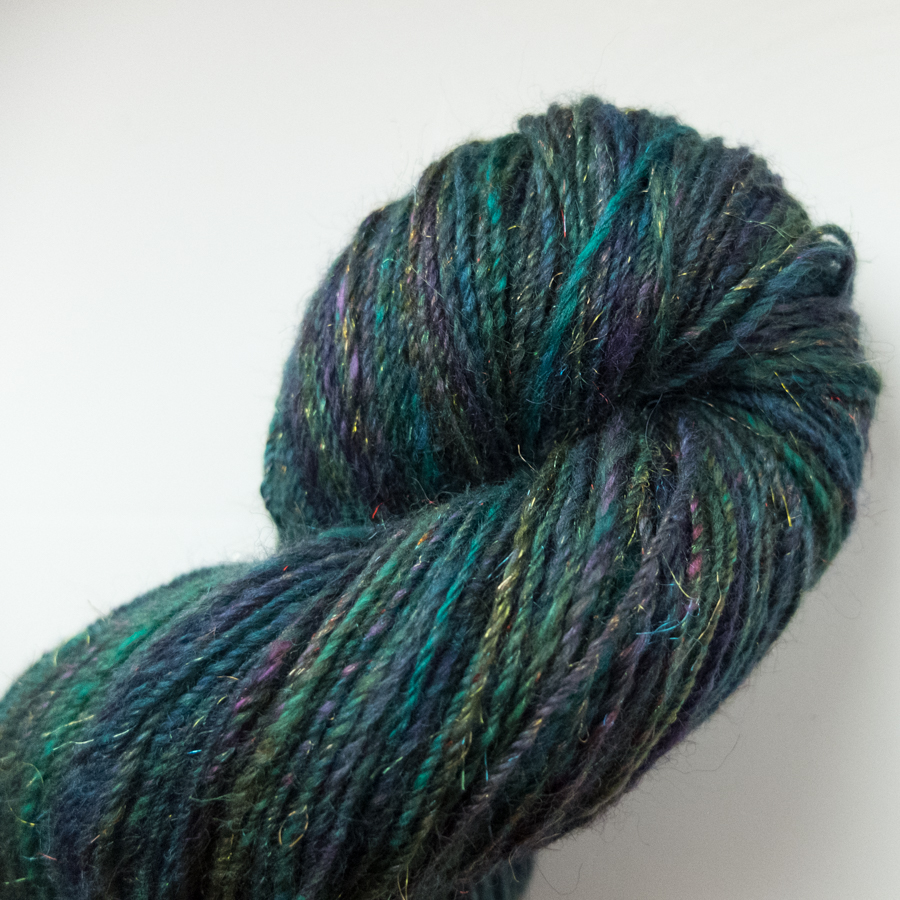There is something about working with undyed fibres and yarns that touches me. Especially (off)-white fibres have a special place in my heart. It reminds me of the beautiful Estonian, Orenburg, and Shetland lacework – impressive shawls that you can literally thread through a wedding ring. So fine, so much eye for detail, patterning, and texture… I have knitted a couple of these lace shawls, even though I hardly ever wear them.
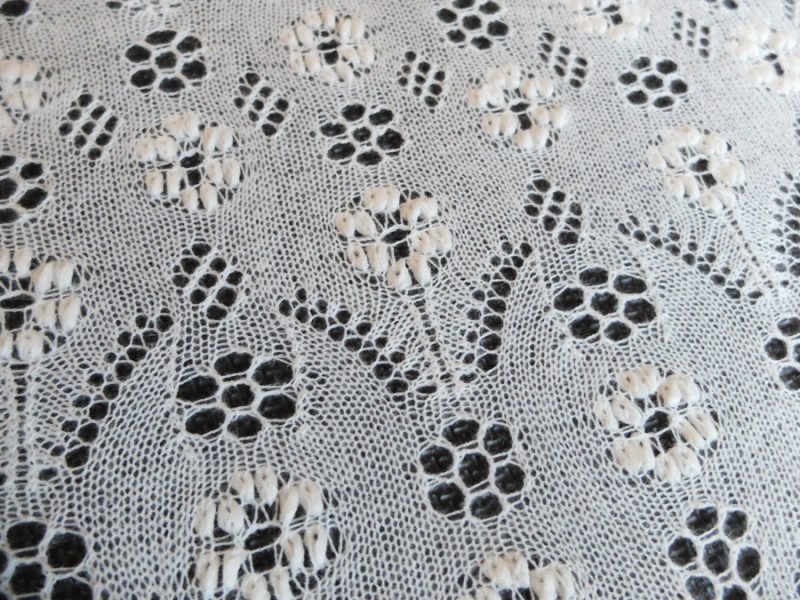
So when I decided on my next spinning project, I was drawn towards some top that had been in my stash for a while: a Nunoco Snuggle Bunny top in the colour White Rabbit. It was not made of pure wool, but there were other fibres in there as well: faux cashmere, firestar, milk protein, mulberry silk, and superfine merino. All in spotless white.
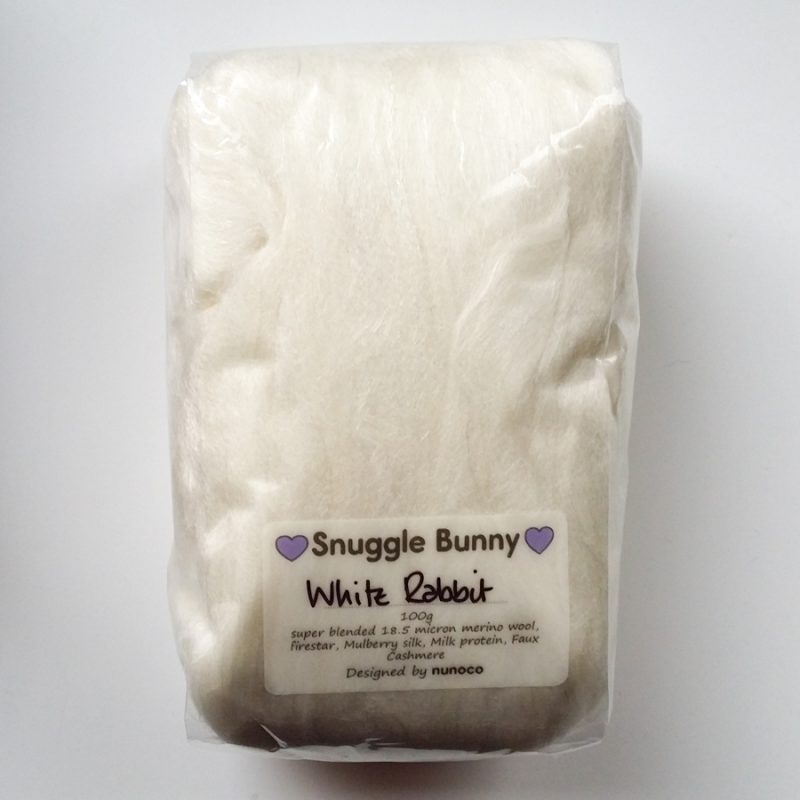
This top had a very subtle shimmer, no real glitter, just a hint. And it was soft, so very soft! I started spinning straight from the top, I didn’t make rolags this time. I decided to spin this yarn on my Mingo & Asho Glasspin spindles. And I was going to spin thin yarn again, after my previous thicker yarn projects.
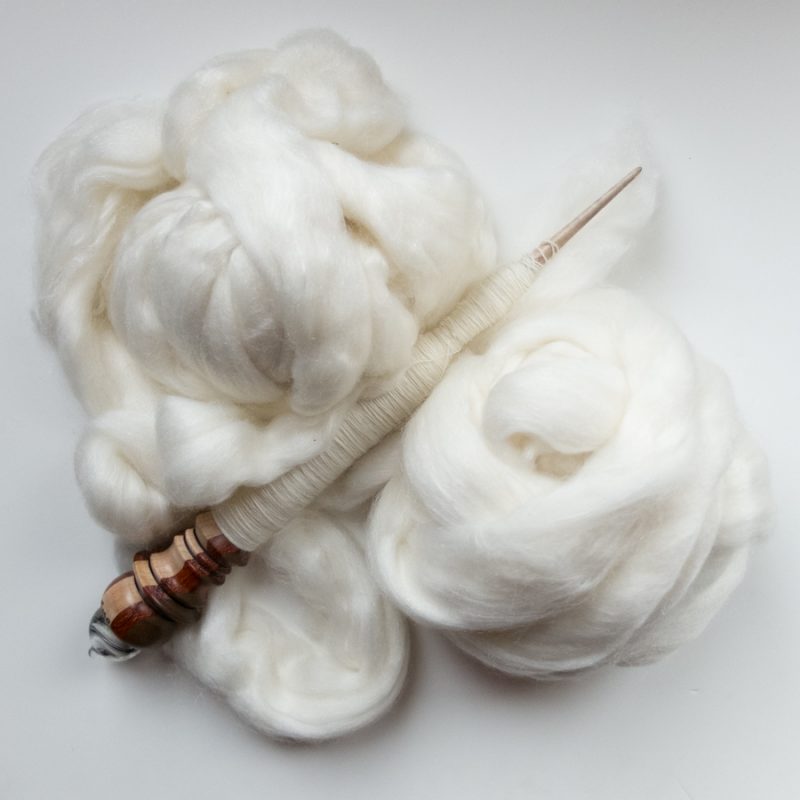
Spinning this fibre was a joy! I found my rhythm in spinning thinner quite quickly. I didn’t want the singles to become too thin, though. Somewhere between lace and fingering weight was thin enough.
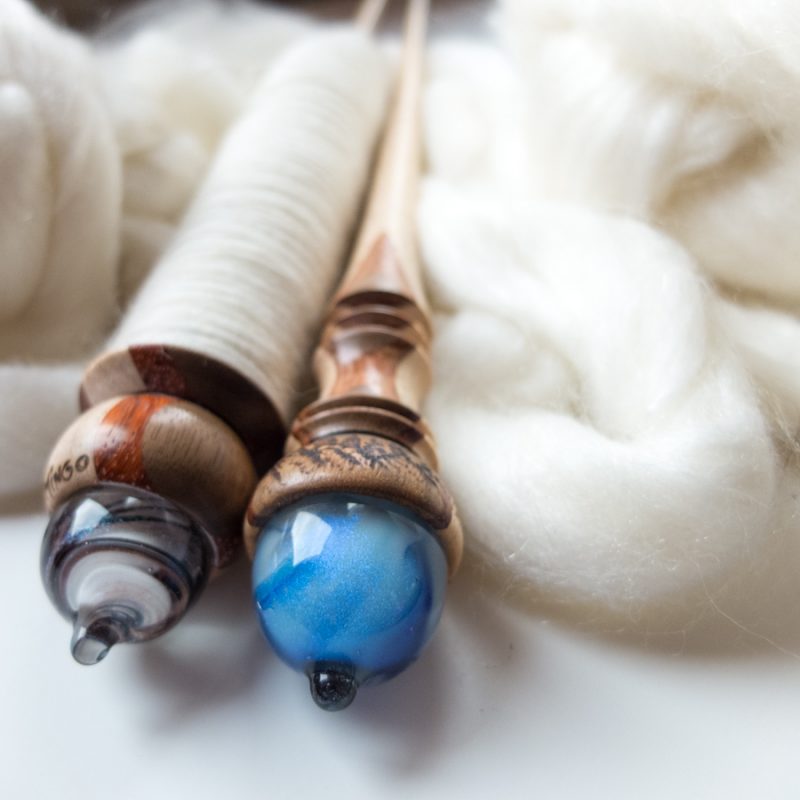
The Glasspin spindles spin very well. Even though they’re quite heavy (around 40 grams), they’re not hard on the hands, because they’re Russian spindles. Russian spindles are slender spindles that can spin fast because they don’t encounter much resistance. Tibetan spindles often spin longer and slower because their weight is not focused on the center, but on the rim. This makes heavier Tibetans harder to set in motion (and for me harder on my hands). I usually use Russian spindles or light Tibetan spindles for spinning thin yarns.
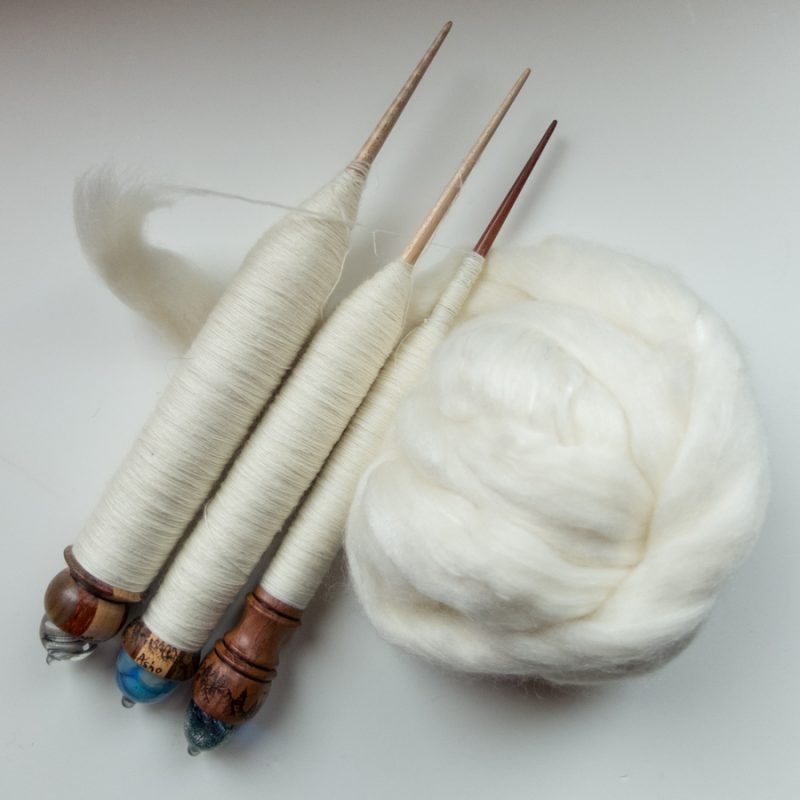
Spinning thin lace yarn can be quite hypnotic. I frequently caught my husband’s eyes focusing on my spinning while we were watching Netflix. The spinning of the spindle, the moving of the drafting hand, there’s a rhythm to it that is quite soothing.
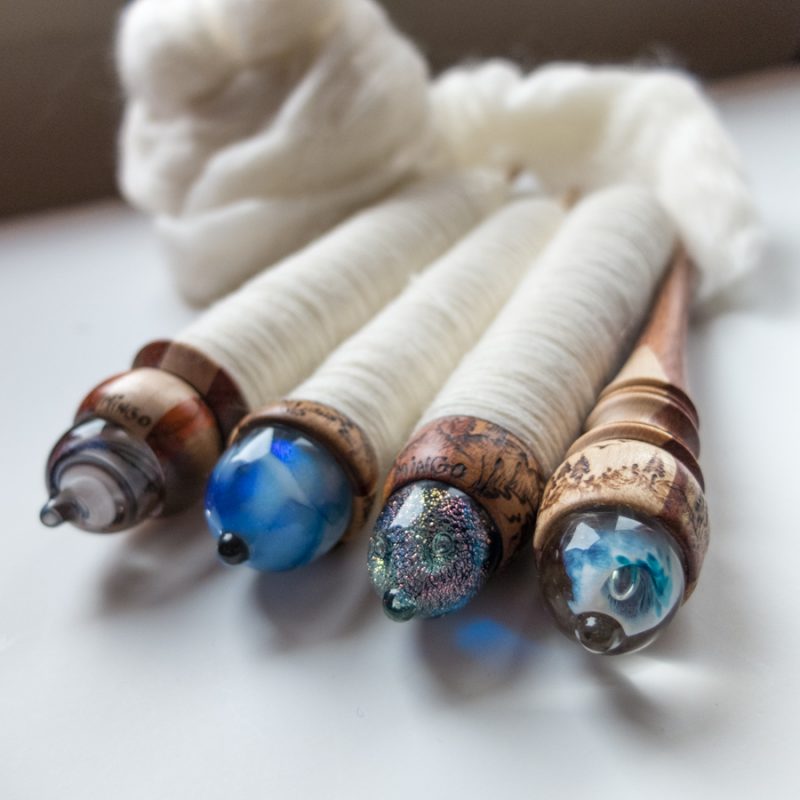
Look at those Glasspin focals! I love looking at them. The one on the far right has a bloom with a drop inside it. It’s so nice when spindles are both beautiful and practical.
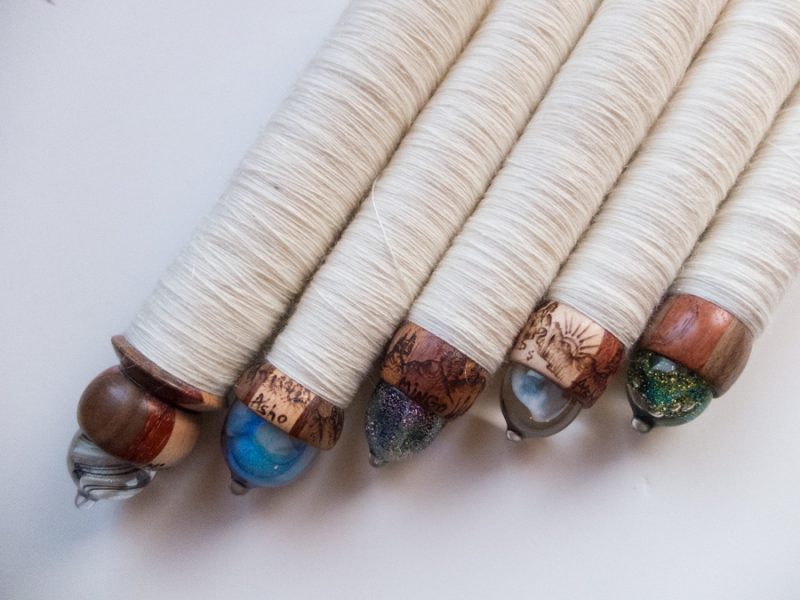
I used all my five Glasspins for this project, so I spin about 20 grams with one spindle. This singles are rather thin, but not too thin for my taste. I decided to chain ply them to create a nice heavy laceweight/light fingering weight yarn.
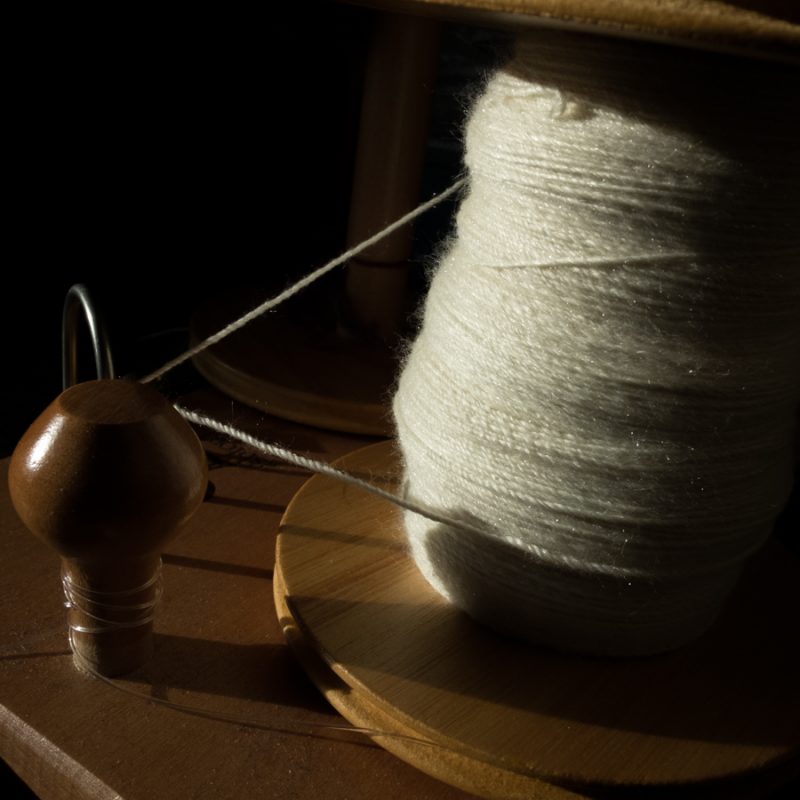
I chain plied the singles on my Ashford Joy, which I honestly only use for plying now… The yarn fit on one Jumbo bobbin easily, and looked so beautiful in the sunlight!
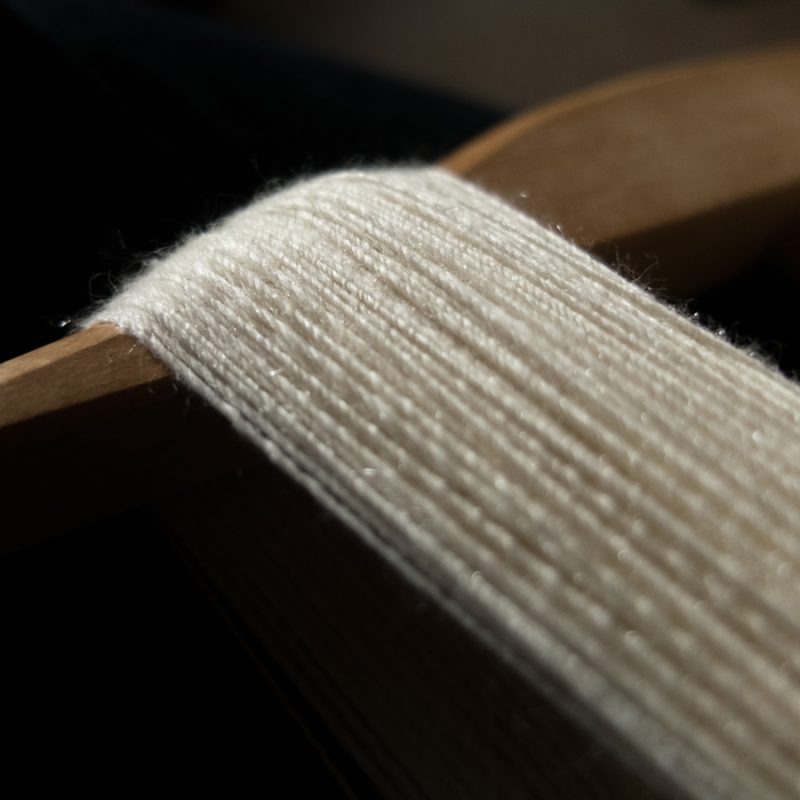
I have an Ashford skein winder, but I hardly use it anymore because it’s very unstable. It sort of falls apart when using it for a while. Instead, I hand-wound the skein on my niddy noddy, using the long middle piece to make the circumference ~2 meters. Then I counted the number of rounds, and concluded that I had spun 547 meters of yarn from the 100 grams of fibre. Right in the middle between fingering and lace weight!
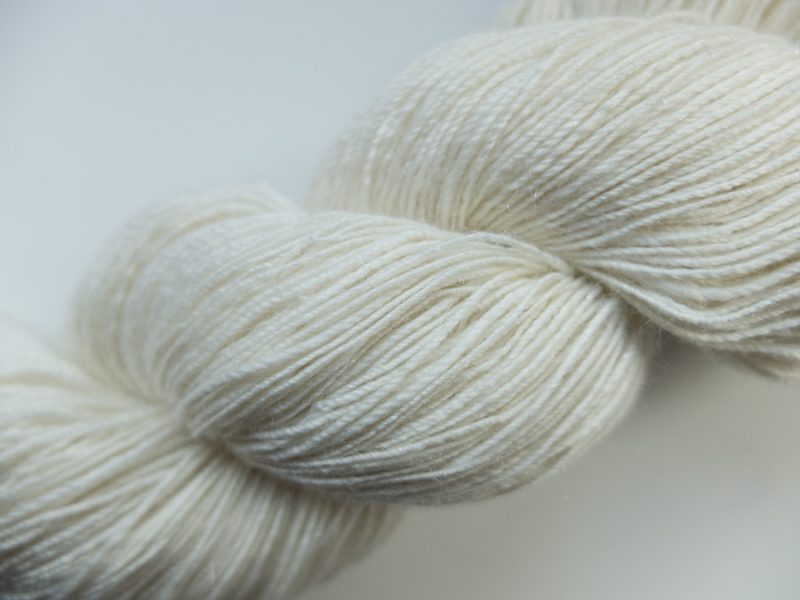
I really don’t know yet what I will make with it. Often, my spinning projects are not intended for a specific knitting project. I just pick some fibre that I would like to spin and start spinning it, sort of following its lead in what it wants to become. Sometimes that means that I spin it thicker or thinner or more or less regular than I would have planned. I like it when that happens, because it means that I have gotten to know another fibre (combination) a bit better.
